Many tech companies are waking up to the importance of building and maintaining a more diverse and inclusive workforce. But deciding that you want your company to reflect society as a whole is only the first step on that journey — you also have to devise a sound plan and put it into action.
To learn more about what that next step looks like, we spoke with seven companies who decided to make diversity a priority. Here are the initiatives they set in motion, and the challenges they faced along the way.

ThoughtWorks is a global software consultancy with offices all over the world. In devising a plan to promote diversity in the workplace, Tarsha McCormick, head of diversity and inclusion in North America, said it is important to get employee buy-in and commit to your program for the long haul.
How do you work to promote diversity within your team organization?
At ThoughtWorks, we strive to not only promote diversity in all of its forms, but we proudly and actively strive to make ThoughtWorks and the larger technology community more reflective and inclusive of the society we serve. We believe talent is faceless, and diversity and inclusion creates more productive teams. Our approach to diversity and inclusion starts from our recruiting practices and continues through all phases of our employee’s career at ThoughtWorks. Aptitude, attitude and integrity have always been our core tenets. We have been successful in our recruiting efforts to consistently cast a wider net by looking beyond the computer science department for talented, diverse and compassionate individuals who possess intellectual curiosity and transferrable skills. This practice has succeeded in increasing our pipeline of diverse candidates whom we may have otherwise missed.
We promote diversity and inclusion at ThoughtWorks on multiple fronts including: diverse interview panels, offering unconscious bias awareness workshops and other trainings, selecting a diverse group of candidates for leadership development programs and opportunities, offering parental leave benefits, establishing a policy for gender transitioning in the workplace, and creating a Diversity and Inclusion Council comprised of employees from all of our North America offices.
How did those initiatives come to be?
Diversity and inclusion is not a business case for us. At ThoughtWorks, diversity and inclusion is a priority because we strongly believe we have an obligation to right some societal wrongs, particularly as they relate to race, gender, and sexual orientation/identity. The work that we have done to make ThoughtWorks and the larger technology community more diverse and inclusive grew from our desire and passion to proactively address some of these societal wrongs, as well as be proud of our diversity and inclusion at every level in North America at ThoughtWorks.
What are some lessons you learned while implementing those initiatives?
We have learned important lessons on our diversity and inclusion journey that I would encourage any organization new to the diversity and inclusion space to consider. These lessons are timeless and continual:
Hope and good intentions do not yield results. When it comes to diversity and inclusion, you have to be intentional and have a plan otherwise you will not see the change or progress you desire.
Change may not happen overnight, especially when it comes to demographics. Do not get discouraged. If you continue to put time and effort into creating a more diverse and inclusive workplace, you will see results.
Include your employees in the process! Get their input and buy-in, and allow them to contribute and lead some of the initiatives.
Do not shy away from tough conversations. Conversations about gender, race, sexism, ageism, etc. can be challenging, but you should not avoid them. In order for your diversity and inclusion efforts to be meaningful, you have to navigate through some uncomfortable areas, but your organization will be better off as a result of it.
Lastly, do not rest on your laurels because there is always room for improvement.

A pioneer in the online lending space, Enova leverages technology to evaluate a broader range of data sources when assessing a borrower’s creditworthiness. Chief Technology Officer John Higginson said his team strives for diversity through partnerships, a blind interview process and an in-house apprenticeship program.
How do you work to promote diversity within your team?
Diversity is one of our top priorities at Enova, and we actively support greater diversity in tech through our own initiatives, partnerships with external organizations and our hiring practices. Our Women in Tech Group hosted its first Chicago Women in Technology Conference last fall, and we continue to sponsor external conferences and organizations focused on supporting and advancing women in tech. We also partner with Code Platoon, a nonprofit organization for veterans who are looking to transition into software engineering careers.
Our commitment to diversity is integral to our software engineering hiring process, which is a partnership between our recruiting, hiring and tech teams and which is aimed at removing the preconceived notions interviewers might form about candidates based on resume triggers like past titles, schools and workplaces. We also ensure we're recruiting for all positions from diversified talent sources. In addition, we actively seek out candidates from non-traditional tech backgrounds for our apprenticeship program.
How did those initiatives come to be?
Promoting diversity is a priority for us not only because it's the right thing to do, but also because we know from experience that diversity in all its forms makes our company better. This is especially true for our tech team, where diversity of thought helps us find creative solutions and innovate.
What are some lessons you learned while implementing those initiatives?
Through our blind interview process and our apprenticeship program, we've learned that sometimes the best candidates come from surprising or untraditional tech backgrounds. Diversity makes us a better company, and we'll continue to make it a priority.

Grainger is North America’s leading B2B distributor of supplies for maintenance, repair and operations. The company has been hard at work to bring diversity to the forefront in recent years, and the efforts are really paying off, said Marty Belle, the company's vice president of talent acquisition, inclusion and diversity.
How do you work to promote diversity within your team?
At Grainger, we are committed to a culture where people of diverse backgrounds and experiences feel that they can bring their true selves and full abilities to work every day. When every team member knows that his or her voice is being heard and their accomplishments recognized, we unlock the team's full potential, and the potential of our business.
To accelerate our performance as an industry tech and digital leader, we must have people with multiple perspectives and abilities who can build relationships and deliver a great customer experience and cutting edge online performance while helping each other succeed. Over the past several years, we have come a long way on our inclusion and diversity journey, and know it is critical that we continue to move forward.
How did those initiatives come to be?
Bringing inclusion and diversity to the forefront is helping us shape the culture. We have identified four areas of focus: our workplace, our workforce, our marketplace and our communities where we have an opportunity to make progress. Some other actions we have taken include establishing inclusive behaviors and language to further collaboration and camaraderie, increasing the diversity of our board members, developing programs such as mentoring and reverse mentoring, and establishing strong business resource groups to promote inclusion and diversity in the workplace. We’re very proud that Grainger earned a perfect score on the 2017 Corporate Equality Index for the third consecutive year and the designation of "Best Place to Work for LGBT Equality" by the Human Rights Campaign Foundation.
What are some lessons you learned while implementing those initiatives?
As we move forward, cultivating an inclusive and diverse workforce will remain part of our company strategy. When we strive to provide an inclusive team environment where people have an opportunity to do what they do best every day, we succeed. The unique quality of every team member matters and it’s also what makes us better.

DialogTech helps companies understand which of their marketing efforts are driving potential consumers to pick up the phone and get in touch. Director of human resources Amy Dolan said the company has made great headway in increasing its number of female employees through weeding out bias in job postings.
How do you work to promote diversity within your team?
We have worked very hard to promote diversity within our team and have been very deliberate in our hiring efforts to support building a diverse workforce. One of the ways we are building a diverse workforce is by eliminating bias in our job postings. We use a service called Textio that helps us identify words and phrases that appeal to different genders and replace them with gender neutral words — ensuring that one job doesn’t yield more male applicants than females and vice versa. Since using this technology, we have been able to increase our female headcount by 62 percent. On top of that, we encourage our employees' involvement in organizations and conferences that promote diversity. It is a great way to network, recruit and embody our commitment to promoting diversity.
How did those initiatives come to be?
About a year ago, a group of women from DialogTech proposed to the executive team that we start making an active effort to build a more diverse workforce. We built out a realistic strategy and proposed goals and a corresponding budget — and the executive team was immediately on board. As a team, we made it a priority because we knew the value in having a diverse workplace; not only does it it fuel creativity and innovation, but it is an attractive part of our culture that helps to engage and retain top talent.
What are some lessons you learned while implementing those initiatives?
Change takes time and effort. Making diversity a priority, building a diverse workforce and continuously promoting it is not something that happens overnight. While we have made amazing progress like implementing a new parental leave policy that allows for 12 weeks of fully-covered maternity leave, 100 percent paid by DialogTech and drastically increasing our female headcount, we know there is still a lot of work to do. Diversifying your company is something that you have to dedicate time and funds to and discuss regularly, and if you're doing it right, it will always live on your to-do list.

Paylocity simplifies the lives of managers at small and medium-sized businesses by streamlining payroll and other HR tasks. Technical talent acquisition manager Laura Durfee said her team strives to evaluate a candidate’s talents instead of focusing entirely on their resume.
How do you work to promote diversity within your team?
At Paylocity, we want to create an inclusive environment where diverse perspectives, backgrounds, and passions foster innovation. This ultimately helps us solve the product needs of our clients. We actively seek out a diverse pool of candidates for open positions in technology, and we value new ideas that are brought to the table. For example, our software engineer and QA engineer interviews include a take-home assignment so candidates have the opportunity to talk us through their coding decisions and showcase their unique talent. This interviewing approach allows us to see beyond a resume and dive into someone’s passion and ability. We also work in teams small enough to allow everyone’s voice to be heard in the product development cycle. By placing creativity and curiosity at the center of our values, we are able to foster an environment where everyone feels safe to contribute, even when their ideas differ greatly from other team members’ ideas.
How did those initiatives come to be?
The drive to meet customers’ unmet needs has always been the core of our product development and IT departments. This shared goal naturally lends itself to a team environment where differentiation and innovation are paramount. To get to that point, we recognized early on that we needed to have people from diverse backgrounds to bring different experiences to the table.
What are some lessons you learned while implementing those initiatives?
Our hiring strategy has evolved as the company has grown, but one thing that has remained constant is our dedication to finding talent anywhere. This automatically opens the candidate pool so we can offer jobs to people regardless of where they live. This offers opportunities to people who do not live in traditional ‘tech hubs,’ which allows us to find qualified employees who have all types of backgrounds and experiences. Recently, we have turned our attention to getting involved in local communities such as Chicago, Austin and Boise. We’re partnering with organizations such as i.c.stars and Boise Code Works to help teach technical skills to people who do not have technical backgrounds. We also have employees in Austin acting as mentors for people who participate in Women Who Code events. As our footprint across the country grows, we are able to get more involved in activities that promote inclusive environments and diversity.

iLoan provides consumers with small and medium-sized loans through a five-minute application process. Senior software engineering manager Sergio Rabiela said iLoan actively strives for diversity in hiring, but that its efforts to encourage under-represented groups to pursue degrees in engineering are just as important to the tech ecosystem’s long-term health.
How do you work to promote diversity within your team?
The first part of a strong diversity program is hiring. The more diverse your team, the more diverse ideas and experiences you have to pull from. This helps ensure innovation, creativity and a very well-rounded product. The second part is building a jerk-free culture. We make sure that we build and maintain an environment conducive to an open and healthy exchange of ideas.
How did those initiatives come to be?
Our customers are comprised of diverse backgrounds. In order to build the best product for our customers, we need to have the people building the product from diverse backgrounds as well.
What are some lessons you learned while implementing those initiatives?
It’s not enough to just try to foster diversity in your hiring practices. That only works for right now. You need to also help promote interest in engineering in under-represented groups so that building a diverse team becomes easier in the future. We recently sponsored attendance to the Windy City Rails conference to some members of the Chicago chapter of Girl Develop It, an international organization that exists to provide affordable and accessible programs to women who want to learn software development through mentorship and hands-on instruction. We plan on actively mentoring with them this year as well.

Opternative makes it easier to get an eyewear prescription by offering online eye exams that you can take using your laptop and a smart phone. Co-founder Steven Lee said experiences he had while practicing optometry drove him to make diversity a priority when building his company.
How do you work to promote diversity within your team?
We have a culture of being open and honest and a willingness to listen to others. Discussions of cultural uniqueness is also welcomed to encourage and foster learning amongst the rest of the team. We also ensure that there is the utmost respect amongst all team members.
As an example, we have a team leads meeting where people from different backgrounds have been brought together to discuss current topics. By ensuring that it is understood that respect amongst all team members is critical, this allows for diverse opinions and viewpoints to be voices without feeling threatened or afraid to speak.
How did those initiatives come to be?
When I was practicing as a clinician in my previous career, I witnessed situations where patients were stereotyped based on their appearance, and not given fair and equal opportunity to make appropriate choices. This was something I vowed to never let happen in my next endeavor. Ensuring a culture that welcomes diversity has been a strong priority from the inception of Opternative.
What are some lessons you learned while implementing those initiatives?
We’ve found that it’s critical to lead by example if you want to evoke a culture of diversity.
We have learned a lot as we've grown our company. Leading by example, for me, has been showing that we are open and honest regarding the state of our company and how we want to drive the company forward in the future. This means having true transparency with all team members and walking the walk instead of talking the talk with regards to implementing initiatives that help others in diverse regions of the world that are in need. It's taken a while, but we are now focusing on a method of giving back to society by donating a portion of our profits to vision focused charities.
Images via participating companies. Responses have been edited for length/clarity.
Know a company we should be covering? Send us a tip or tweet us@BuiltInChicago

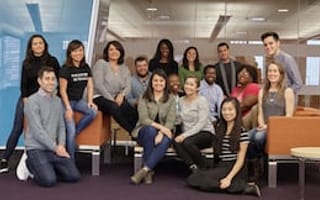
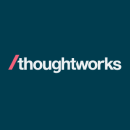
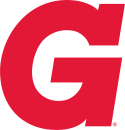
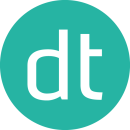
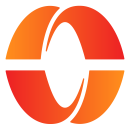





.jpg)
